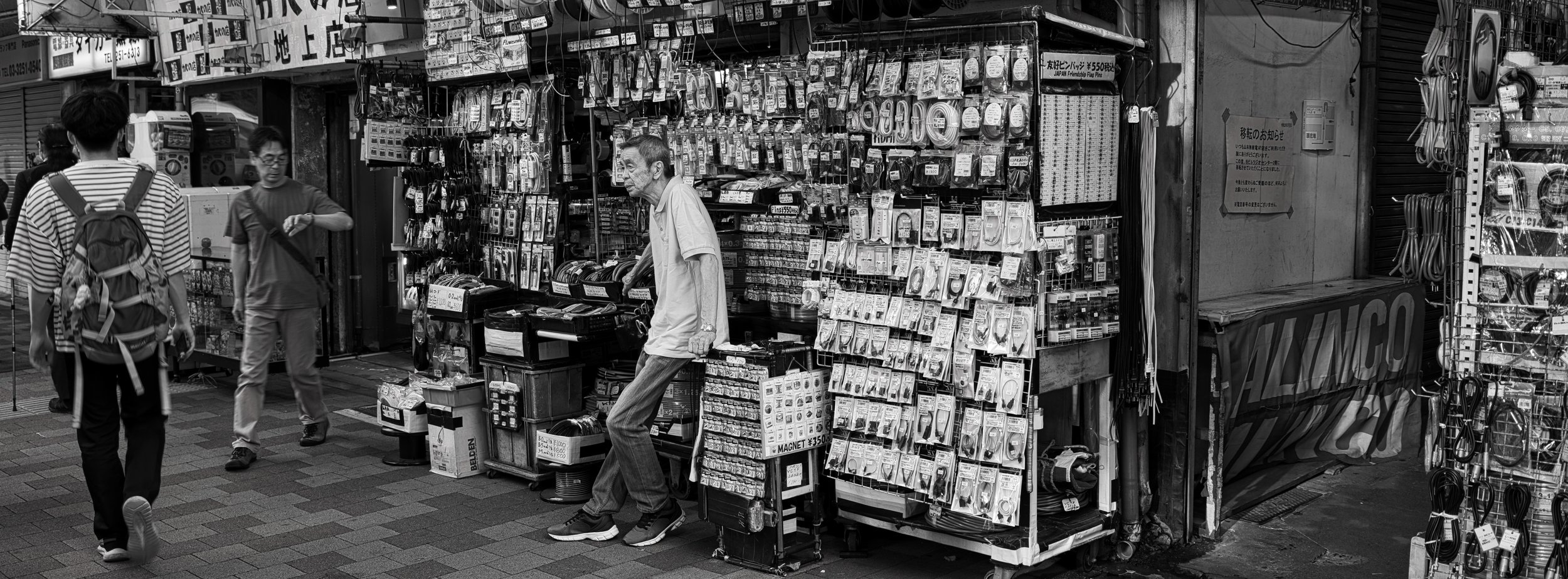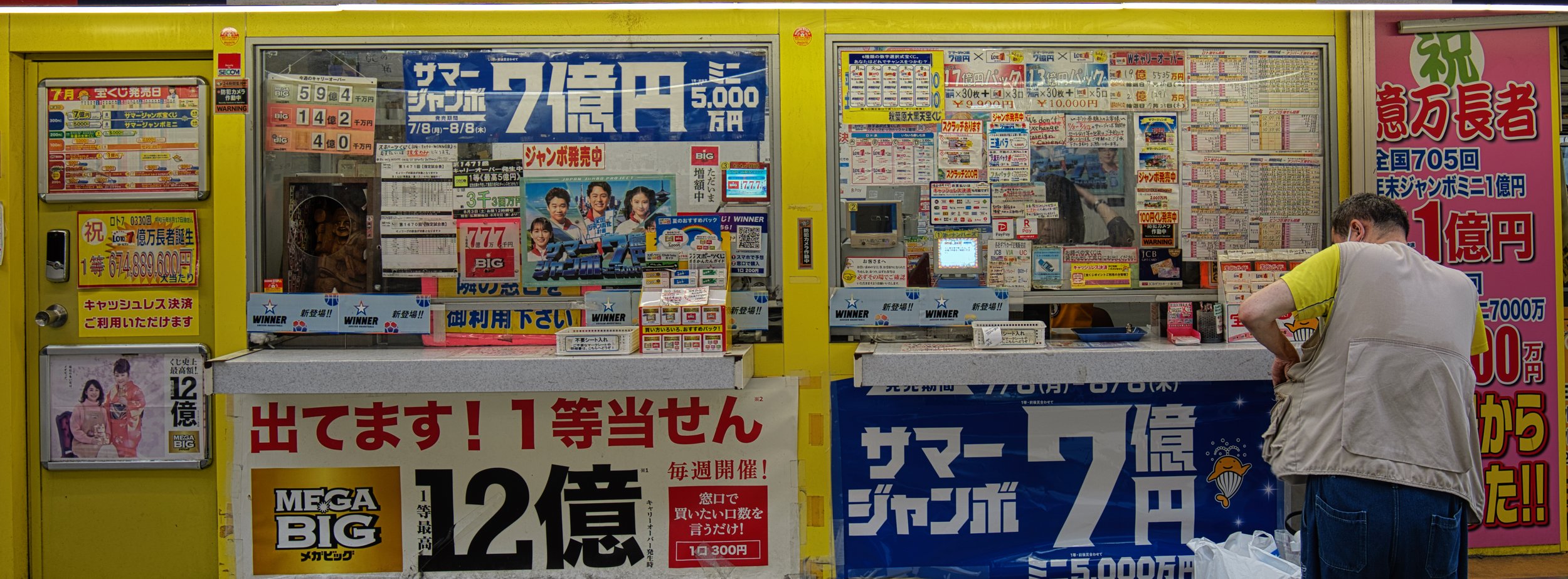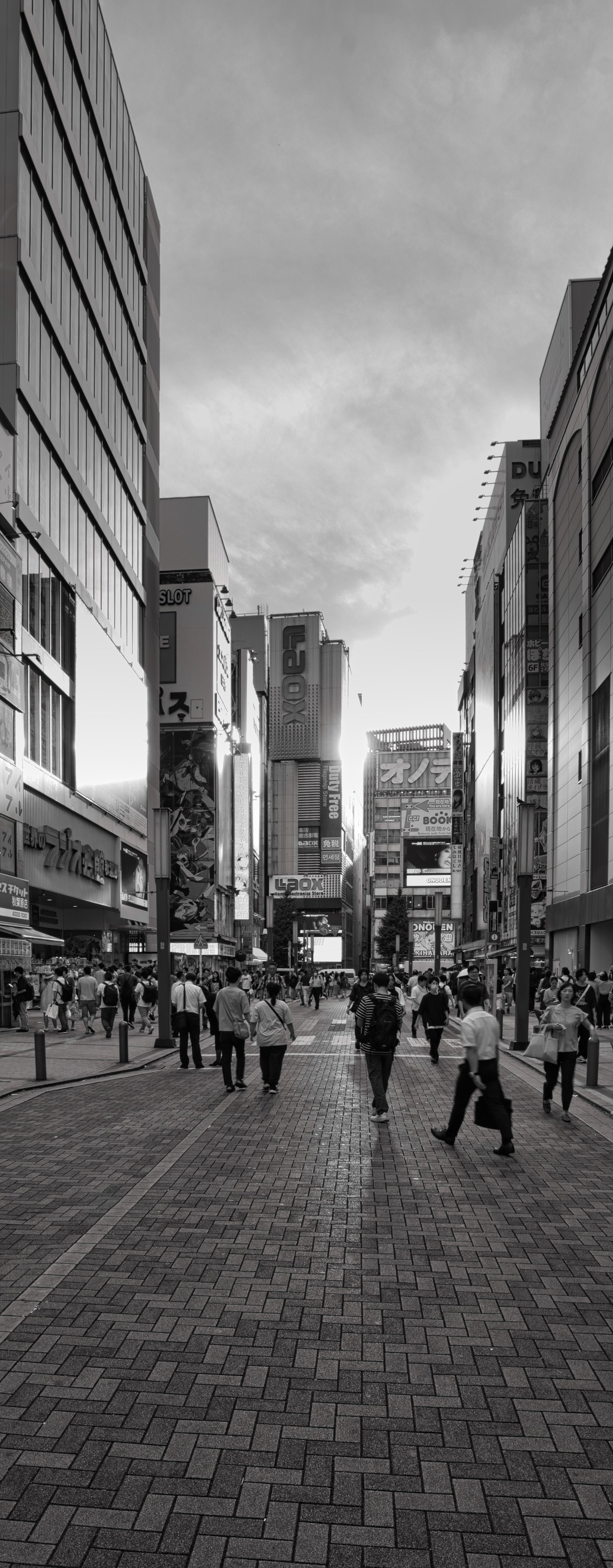Panorama In Akihabara
Shooting Panoramas in Akihabara
The Panoramic Ratio of
64 X 25 In Akihabara
Over the years there have been several specialized cameras for made especially for taking panoramic photos in one exposure. The classics like the Hasselblad xPan, the Fujifilm GX617, the Widelux and dedicated large format rigs with bellows come to mind. They all provide a time space in photography captured in a single moment that scans across the horizon. A few months ago Panasonic Lumix releases the S9 model. During the launch event many camera reviewers tried the 64 X 25 frame format available as one of the aspects ratios. This was the inspiration to try this aspect ratio in Akihabara last summer
There Is No Panorama
Without The Wide Lens
For this Expeditions In Light the field of view of 65 x 24 really requires a wide angle lens. You don’t get that feeling of looking across a scene at 50mm. You need an image where the eye takes time to travel from one edge to another. The lens I used to produce that feel was the Panasonic Lumix S Pro 16mm - 35mm F4. I knew by combining this lens with the 65 x 24 aspect ratio my instant panorama would show in the viewfinder. With this lens in hand and setting the aspect ratio in the camera settings, I was ready to go.
Panorama In The City?
One thing I realized fairly quickly as I started this street photography journey, I was in a very dense city…
If you have ever walked around Tokyo many sections like Akihabara are filled with houses, apartments, businesses, condos, restaurants, and tall business buildings. There are parks and open space in Tokyo, but in a city of 37 million obviously people need to fit in. This usually means buildings are close together and wide framing need a sharp eye. This makes for a visual composition challenge.
The Visualization Challenge of Panorama In the City
I like a photography challenge. It seems a lot easier to point at a mountain range and and stitch together a panorama. To be in the city and forced to get the image in one shot makes you think. Images are a combination of what you include, the subject, and what you leave out. Panoramas have wide edges. They also completely shatter the rule of thirds. Placement of the subject and the supporting surroundings must be in a long image band. The subject most likely then will be a smaller part of the frame and the supporting surroundings must carry more of the story.
Photography As A Story
Good photography present a story in an image. Practicing photography is the process of learning to tell that story. Various things from composition, subject placement, subject interaction, what is in and out of the frame, and light combine to tell that story. Sometimes you need to find options, expeditions, and new concepts that help you learn how to tell that story. Grabbing a photography adventure like taking instant panoramas in the city helps build those photography muscles. I don’t think I was perfect in this quest, but without the quest how can I improve?




